Nicaragua
The border crossing was even easier than last time, maybe we are just getting used to waiting in several different lines, making multiple copies of every piece of paper and paying for numerous fees. We drove south to Esteli, a green, pretty little town. Here we found the Nica Cigar Store, home for the night. The owner, Julio, was a Cuban who has lived here for 9 years. We spent the evening being regaled with stories of trying to escape Cuba, his life in the U.S. and his years as an employer in Nicaragua. Fascinating stuff.
Leon
This was the intellectual center of Nicaragua and understandably the home of the revolution. Augusto Sandino took his guerilla forces into the northern mountains and waged his war against the corrupt dictator Samoza. The Museo de la Revolution is housed in a former palace and is now a bullet-ridden shell decorated with old posters, photos, murals and newspaper clippings. All the tours are led by former freedom fighters. After all these years, their passion is still evident. Interesting that their current dictator got into power as a member of the F.S.L.N.
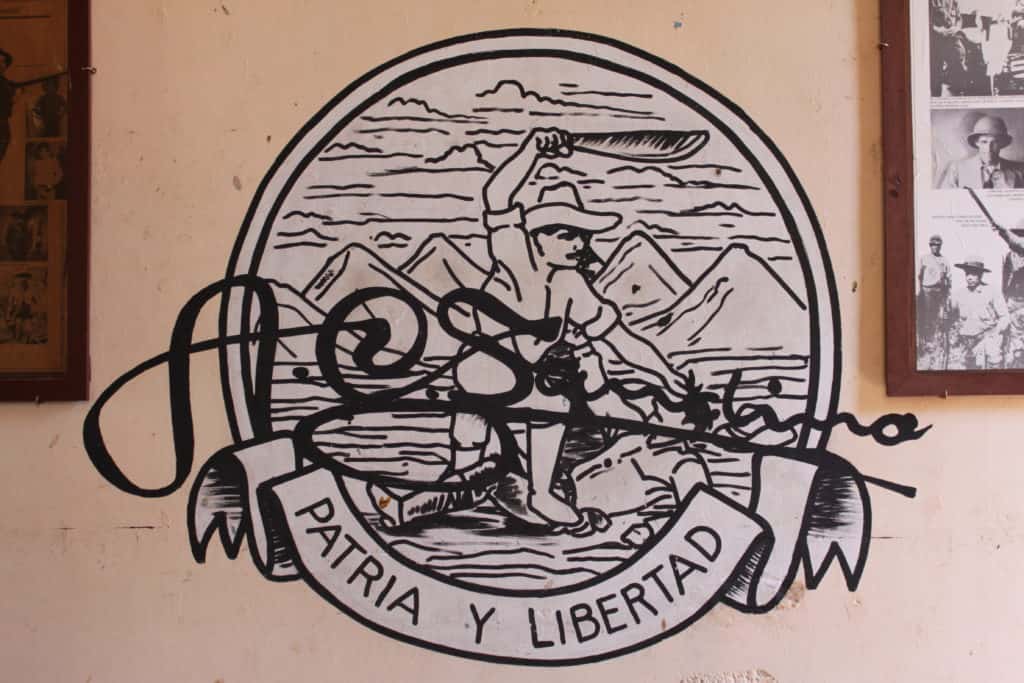
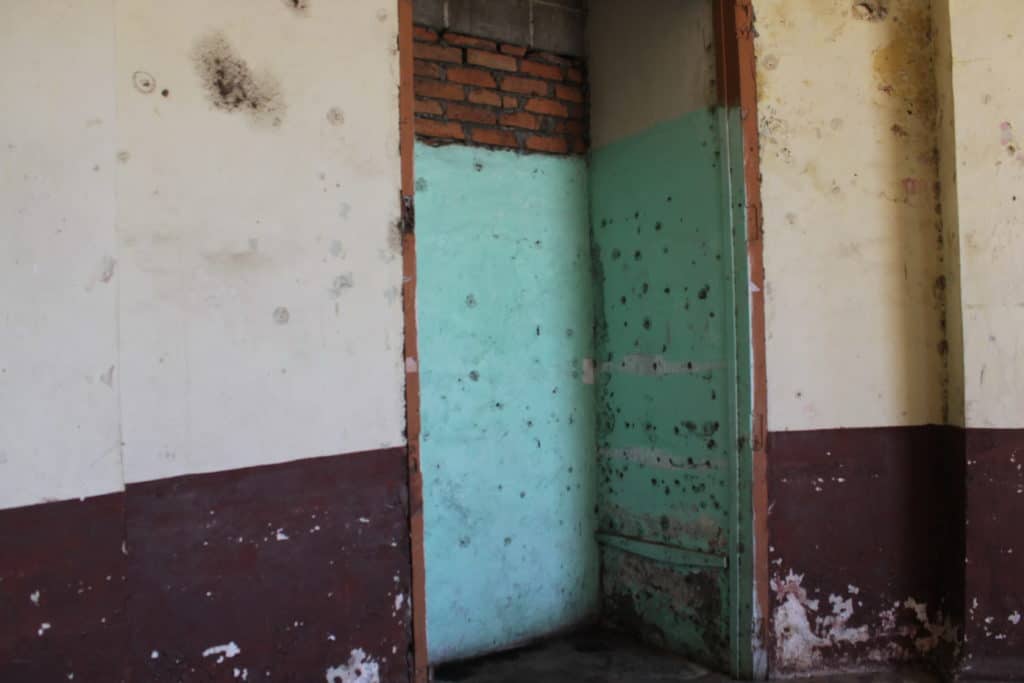
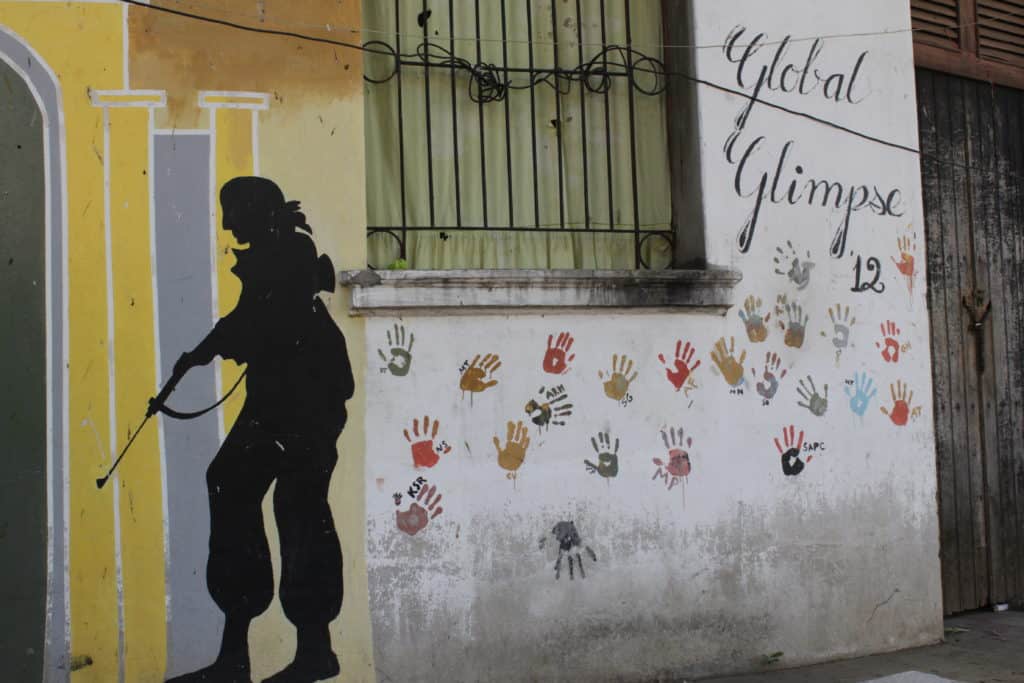
Our next tourist stop was the Museo of Traditions and Legends. Surprising that it was housed in a former prison which was used as a place to torture the rebels during the war. I found the murals depicting types of torture and photos of the very young rebels much more interesting and compelling than the masks and figures in traditional celebrations.
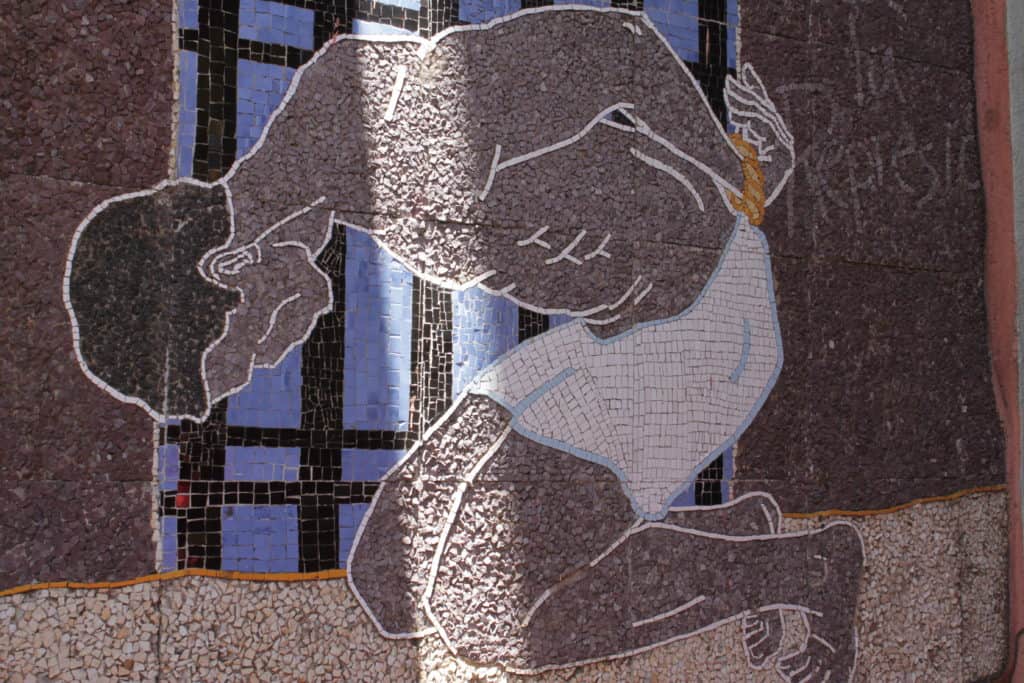
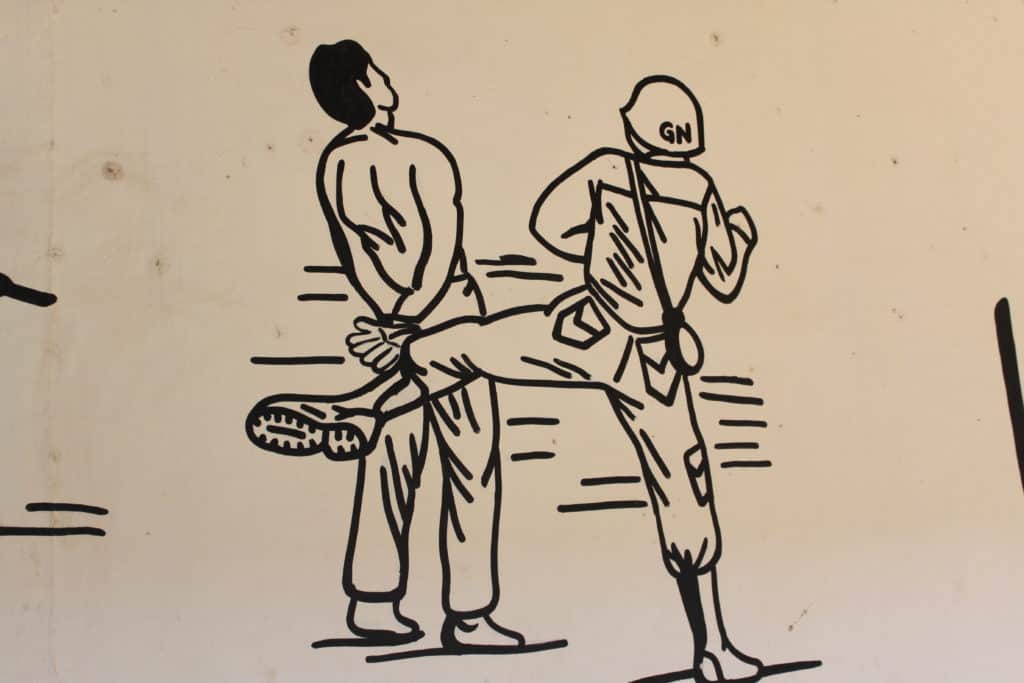

Our last stop for the day was the Ortiz Gurdian Centro de Arte Fundacion. This extensive collection was housed in two 19th century casas. These homes were massive, built around several open courtyards and finished with fine woods and crystal chandeliers. The variety and quantity of art was exhausting, we were there for hours and were only able to do a cursory walk-through for many of the rooms. They had a Frieda Kahlo exhibit, indigenous pottery, Baroque paintings, modern art from Latin and North America and contemporary Pop art.
After the hard-core touring, we spent the next couple of days chilling at the finca (farm). Our hosts were a young couple with two young daughters and a nanny. The wife had driven us into town the first day and gave us a quick tour of the indigenous church, statue of the native chief of the area and pointed us to a great restaurant for lunch. Her husband, Axel, treated us to Brazilian appetisers, a light rum drink, which he fermented with Nancite, and sent us off with Nacatamales when we left. I loved their three-sided house; no walls on the North side to keep it cool but I would not want to do the dusting. When they played soft jazz at night, we enjoyed every note.
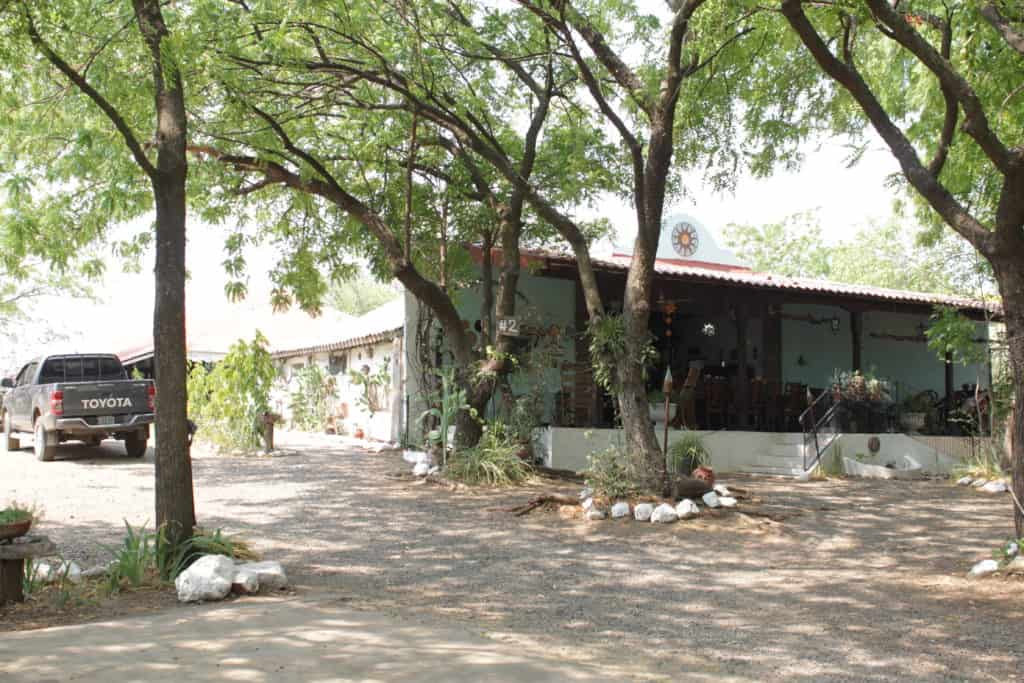
Granada
We spent one night at Mirador Catarina which gave us a view of Laguna Apoyo with Granada behind it and the huge Lago de Nicaragua in the distance. We had a hazy day so it was not as stunning as it could have been, but everyone was out enjoying their Sunday afternoon, so people-watching was prime.


I always thought that Granada was a huge colonial city in Nicaragua, and an important political and economic base for the country. Actually, none of the above is true any more. Within three days we had become very familiar with the entire downtown core. We lived in the Red Cross parking lot which wasn’t glamorous but was easy walking distance for everything. Due to the protests last year, tourism has disappeared in this town. Many shops and restaurants have closed, and the streets are deserted. It felt slightly eerie at times. Despite this, the people we met were very welcoming, the city was clean, and we found it to be charming. A huge advantage for us was the fact that many people spoke English. We took a carriage ride on our first day which gave us a sense of the history and architecture. Our guide explained that the trains had been sold to Peru, the pirates used to sail here from the Caribbean and poets are revered in Nicaragua (Ruben Dario especially). We did the Choco Museo, dined out, and strolled the pedestrian walkway under a canopy of lights.
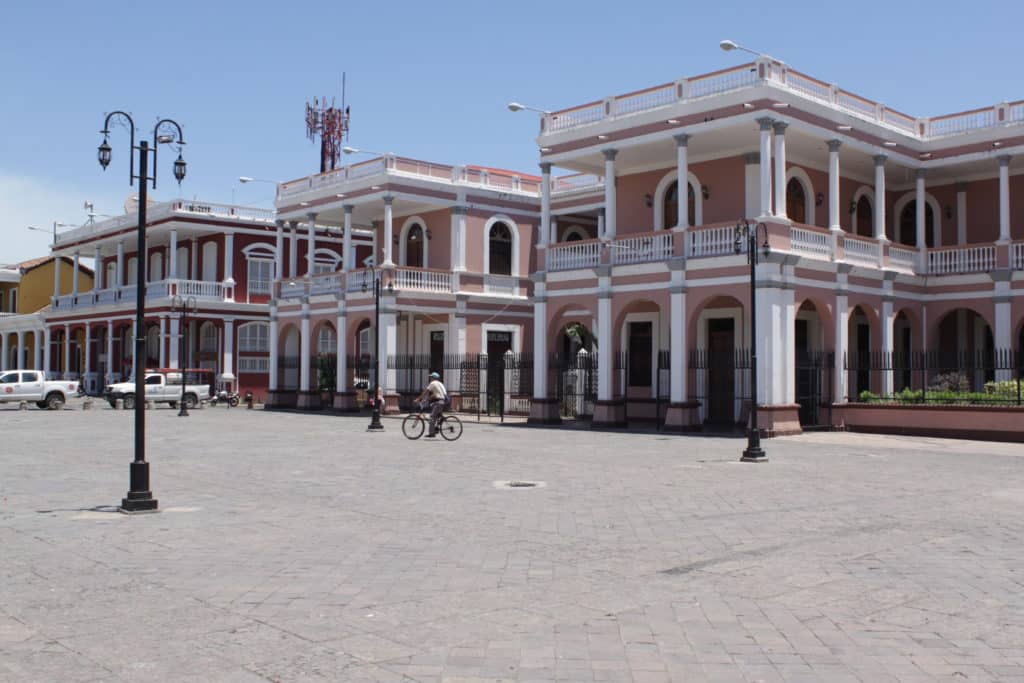
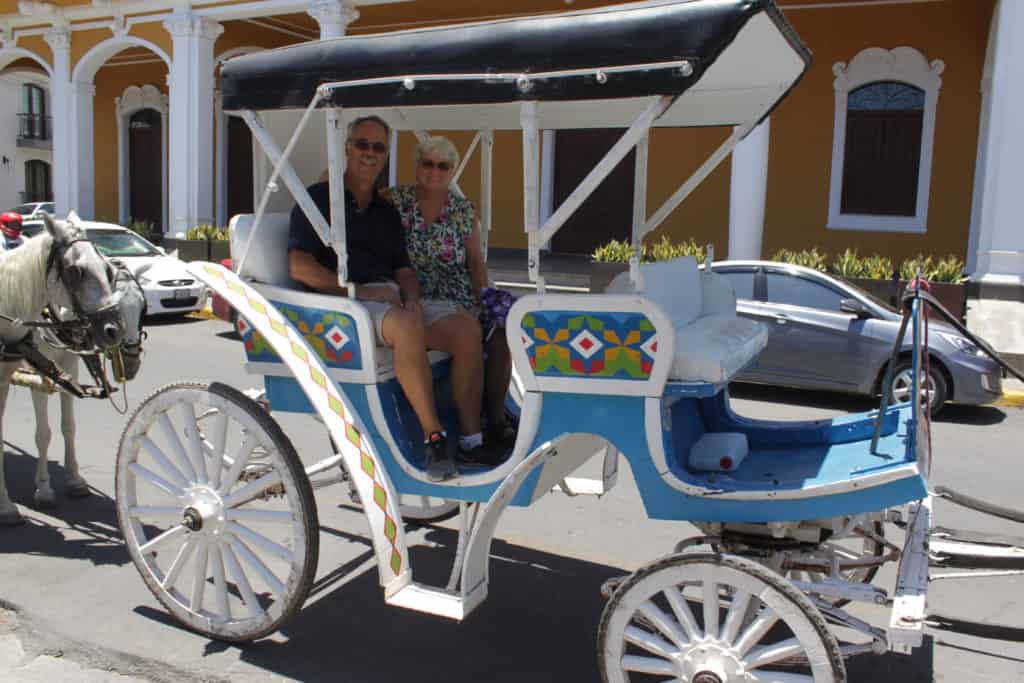
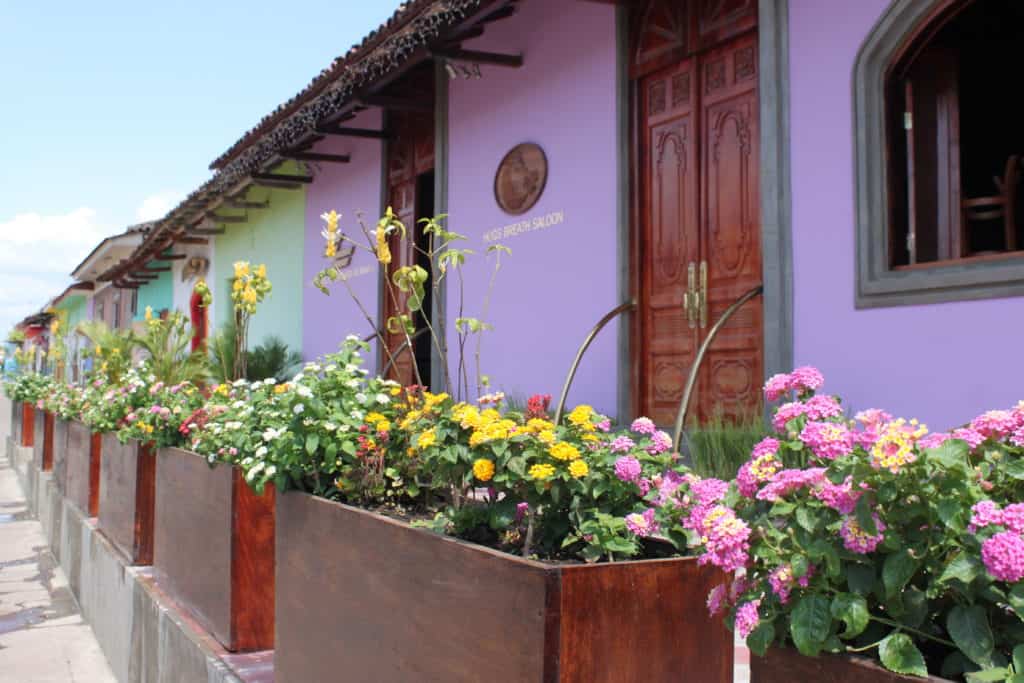
The next day, we did laundry and exchanged a dozen books at a café. Then we went to a cute art studio and bought a painting. The artist was Walter Castillo. He offered to add my favorite bird (a Quetzal) to a jungle scene he had done previously. Who could refuse the customized artwork and a chance to watch him create it! As an extra bonus, we learned about his life and enjoyed his sense of humour.
Our final day in Granada was a flurry of touristing. We started with a guided tour of San Francisco Convent. This museum is dedicated to the Immaculate Conception but also housed large indigenous carvings from Ometepe Island.

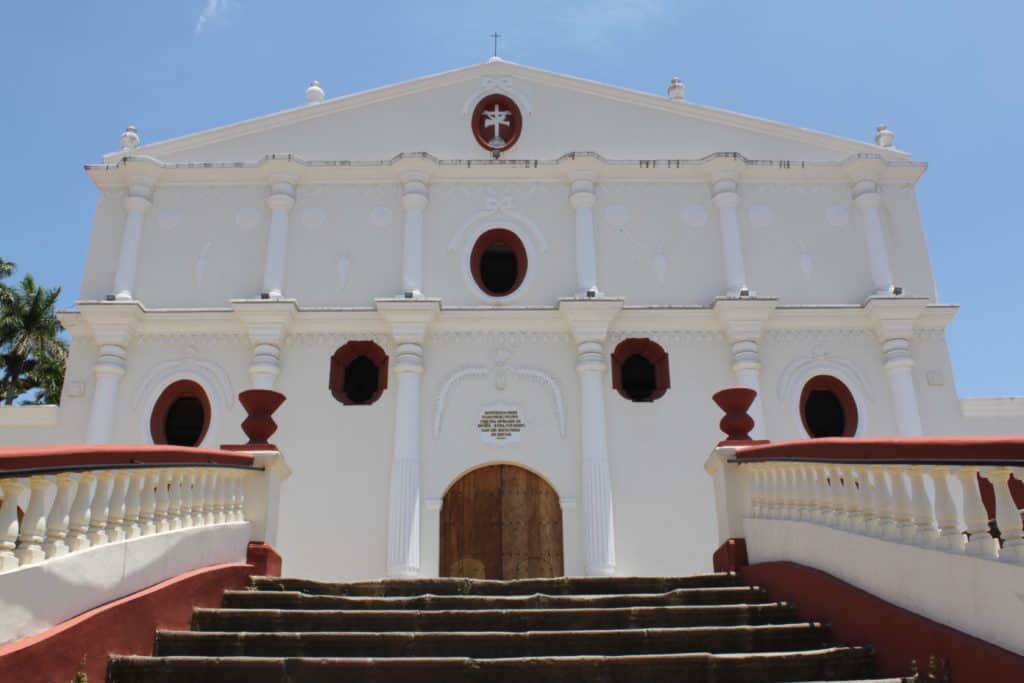
The second outing was a boat tour through the 365 islets in Lake Nicaragua which were formed when Mombacho Volcano erupted. Many of the islands are privately owned by rich locals but the rest are populated by poor fishermen. We saw lots of nets and witnessed three different styles of fishing. Three of the islets are homes to monkeys, one for Capuchins, one for Spiders and one for Howlers. One island is a cemetery while others have stores, etc. so, the islets form their own community. Most impressive though was the huge variety of birds who live here, egrets, pelicans, herons, jacanas, swifts, and many more with convoluted names which I forgot almost instantly. There was a fort too, more pesky pirates of course.


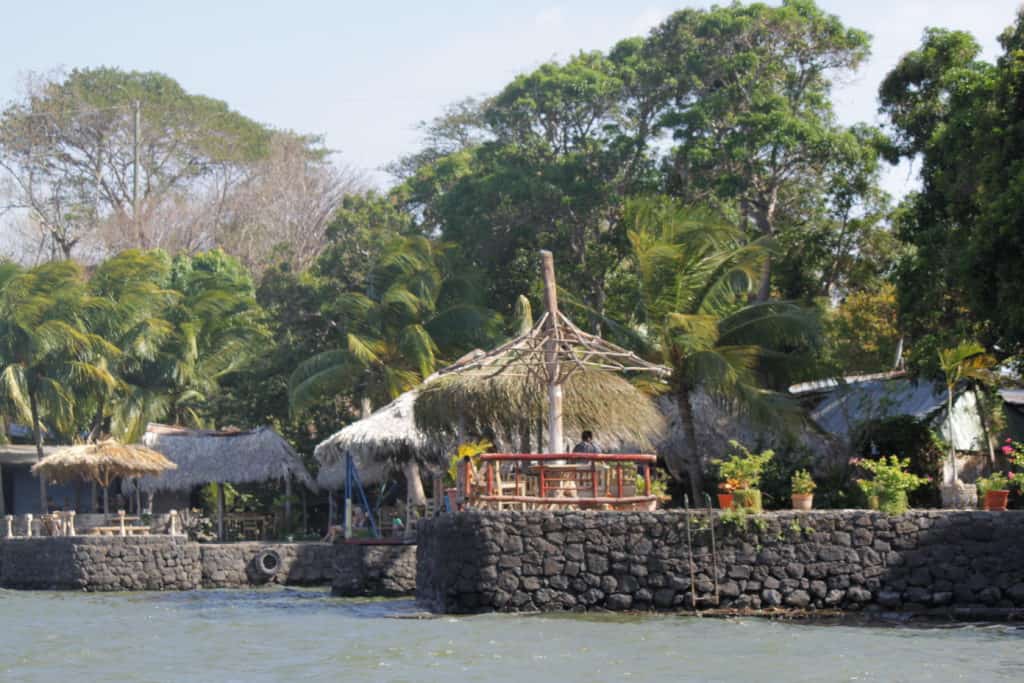
The final excursion was to Masaya Volcano. This was a night tour to see the magma in an active volcano. Standing on the rim, watching the roiling lava 400 meters below was definitely a bucket-list moment. Check! An unexpected surprise was the cacophony of the hundreds of birds who live inside the crater walls. They have evolved to be able to cope with the noxious fumes in exchange for protection from predators. Nature amazes me.
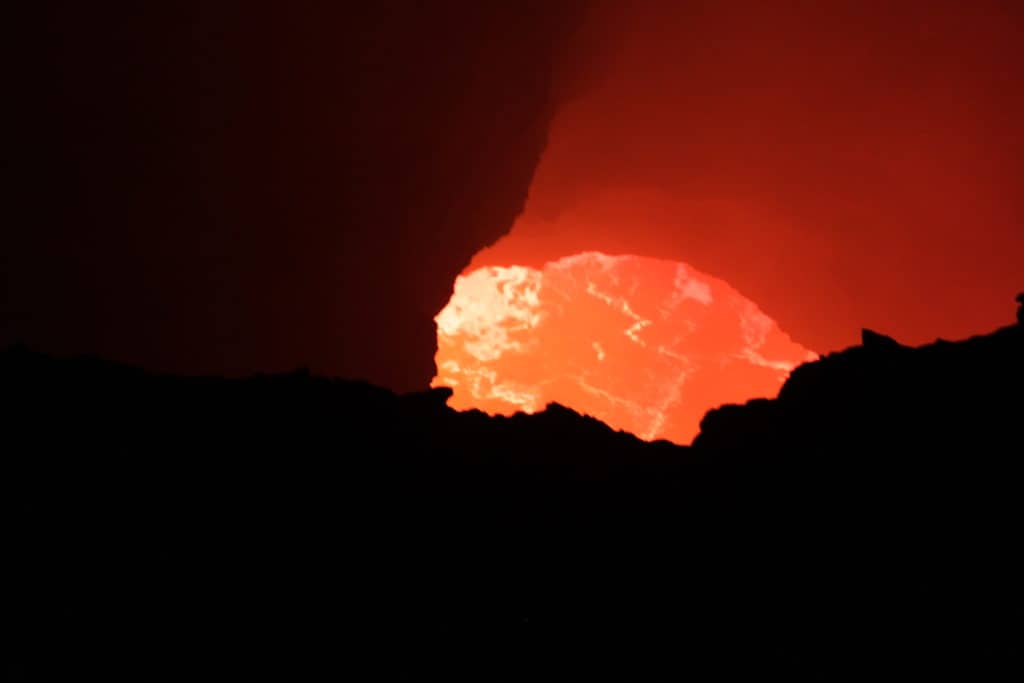
Easter Pilgrims
As we drove south from Granada, we encountered another unique spectacle; dozens of covered ox carts. Each was piled high with bags of food, cookware, bedding and assorted belongings which included wheelchairs and chickens tethered to the rooves. The carts had thatched or palm-leaf Conastoga covers and were pulled by oxen or horses. They had stopped for lunch, so we had an opportunity to walk around and take a few pictures. They were making a pilgrimage for Easter and were heading to Granada. Entire families shared one small wagon so all cooking and sleeping would happen outside. I suspect that only the extremely old and young got to ride.

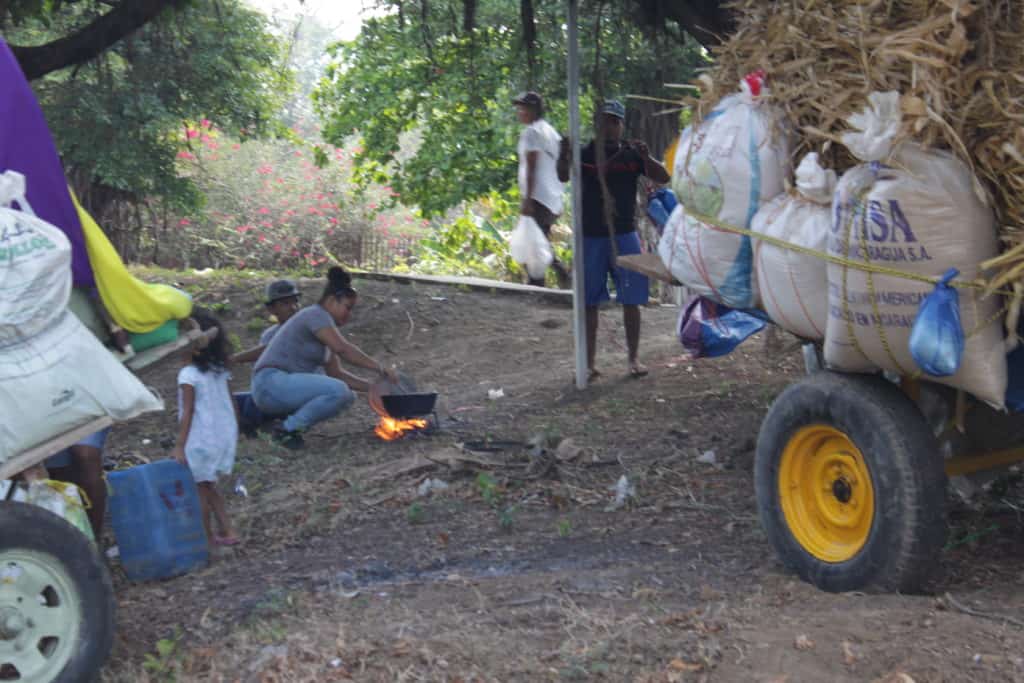
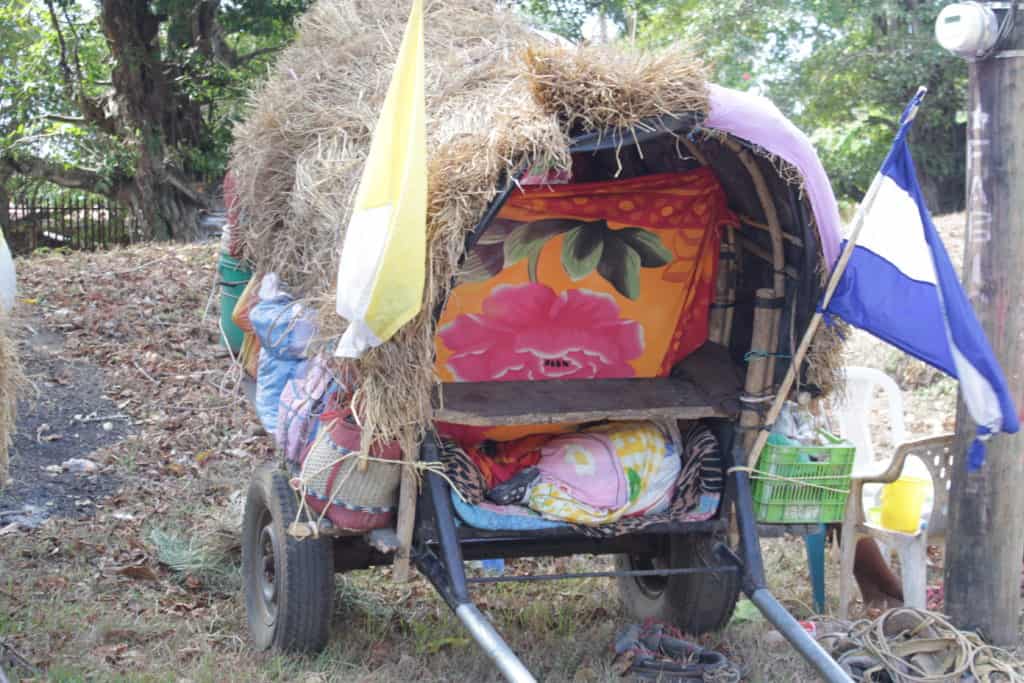
Ometepe Island
We caught a ferry at San Jorge for Ometepe Island in Nicaragua Lake. This is one of the largest lakes in the Americas and has rare freshwater sharks. These Bull sharks prefer to hunt in shallow water. They also have caiman which can grow up to 3 metres long, so swimming is not encouraged. It seems strange seeing no recreational boats, kite boards, sea-doos, etc. but people here have no money for toys and this is not a friendly playground.
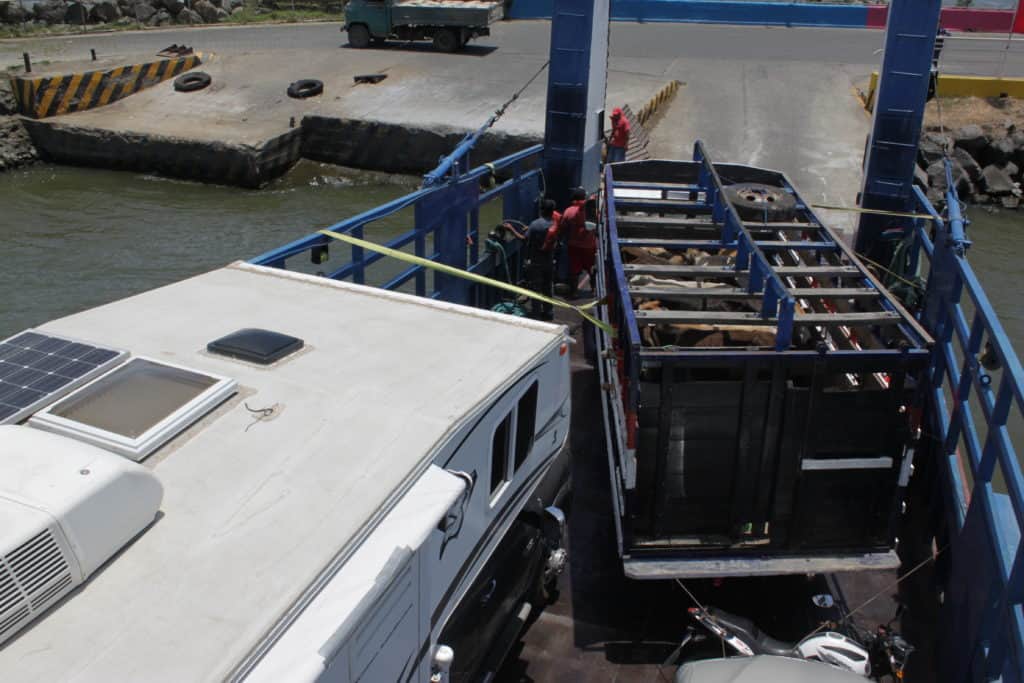

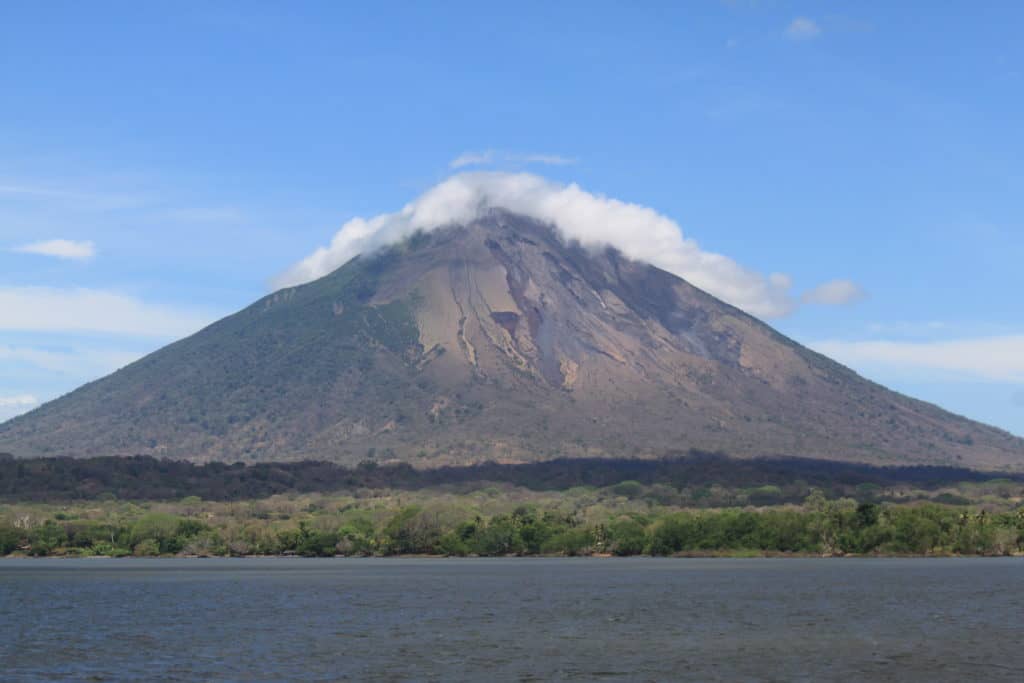
Our destination was La Punta Resort. The resort is only 3 years old and has lots to offer: a pool, a small restaurant, hammocks and rocking chairs on the deck, a resident Macaw and deer and a lovely view of the lake. There is entertainment as well; horses who invade the grounds and need to be chased away, ox-carts which show up to haul away wood and branches, and singing toads who traverse the property enroute to the lake. Good Wi-Fi and electricity and no other tourists make this a perfect spot for us.
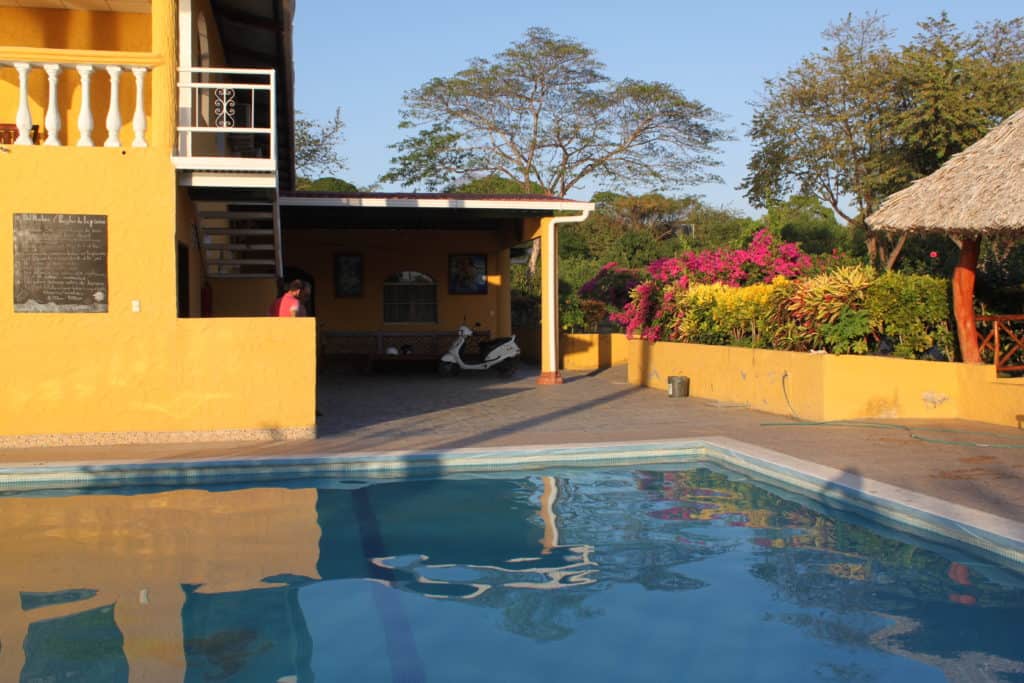


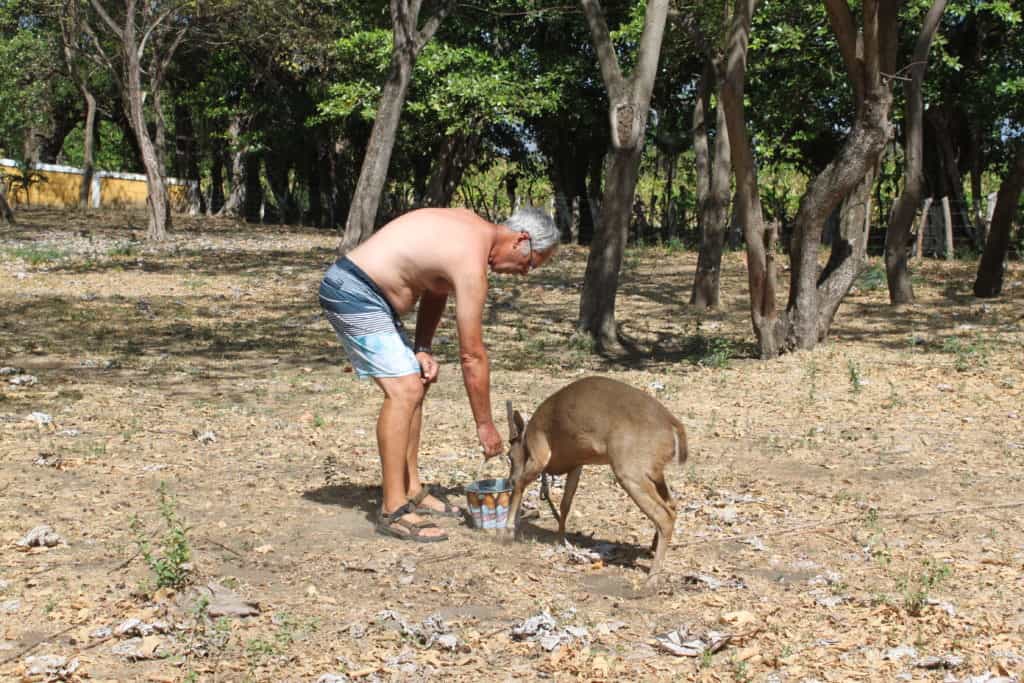
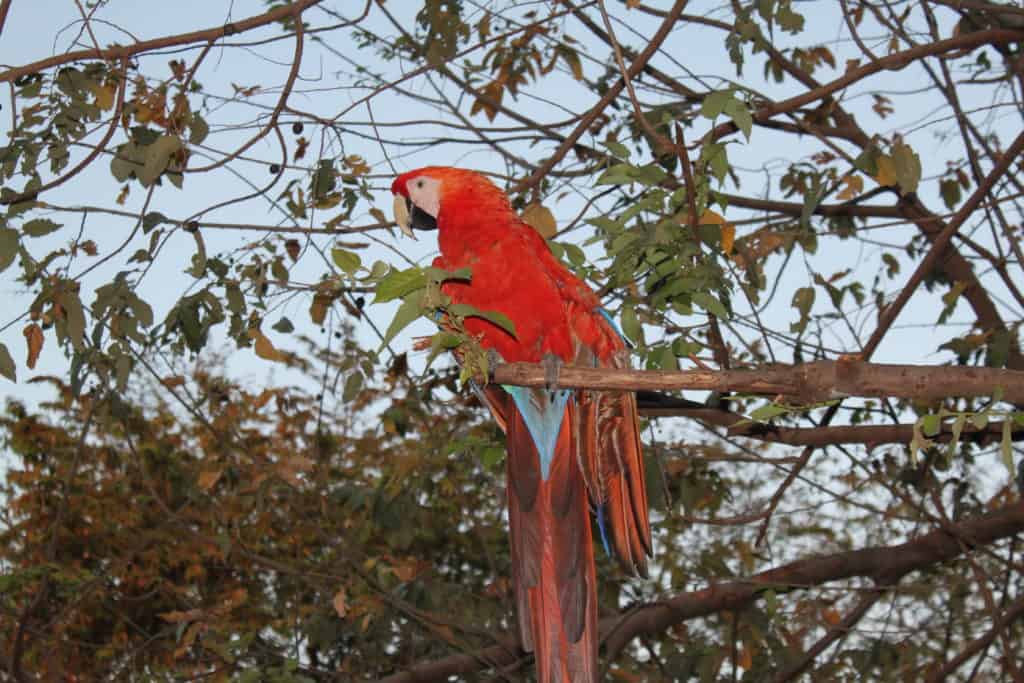
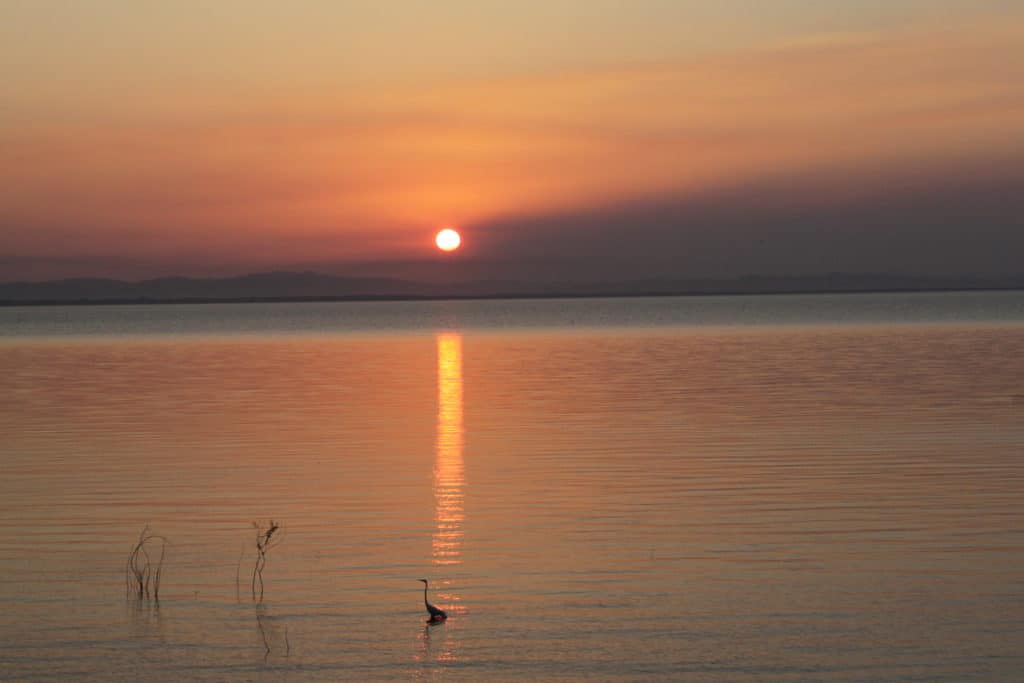
We decided to rent a motor scooter to explore the rest of the island. The island was formed by two volcanos; Conception, the active one and Maderas, the dormant one. Our plan was to drive the one road that encircles both sections. Within a few kilometers, the paving stone road gave way to dirt which then disappeared into a narrow, rocky, pot-holed nightmare. It was a very slow and tortuous adventure. The good news is that there was virtually no motorized traffic on most of the road. Livestock was another matter. Horses, cattle, pigs and chickens apparently run free and when farmers do round them up, the road is used to herd them home. We learned that it is best to let them pass you than vice-versa. The island is a vast lava field and their homes, pastures and plantain fields must fit among the boulders and rubble. It is literally a hard-scrabble life.
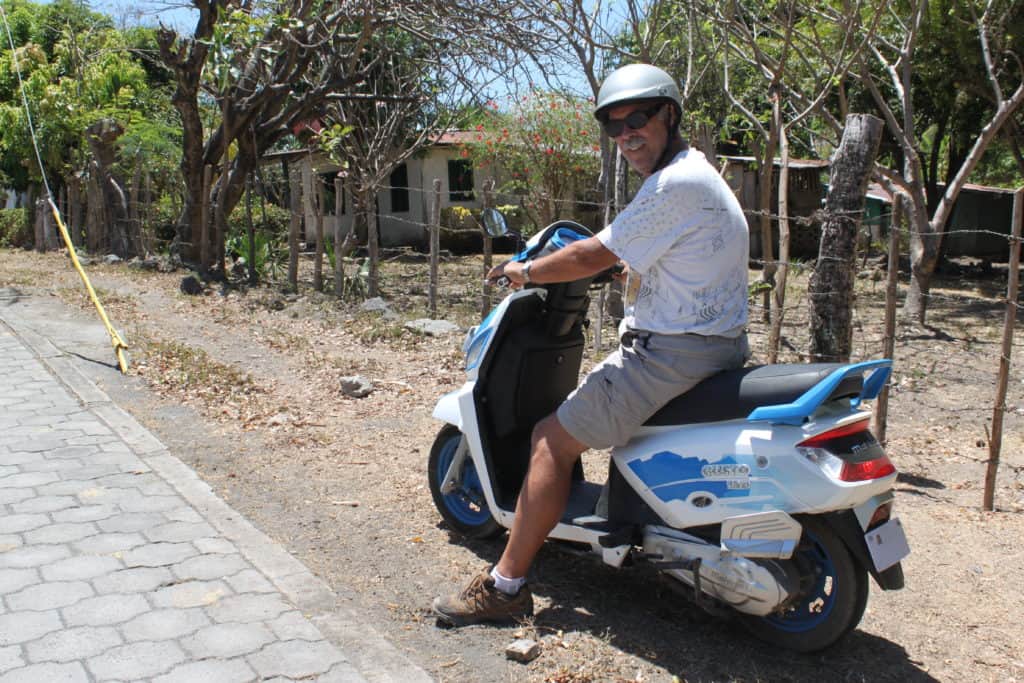
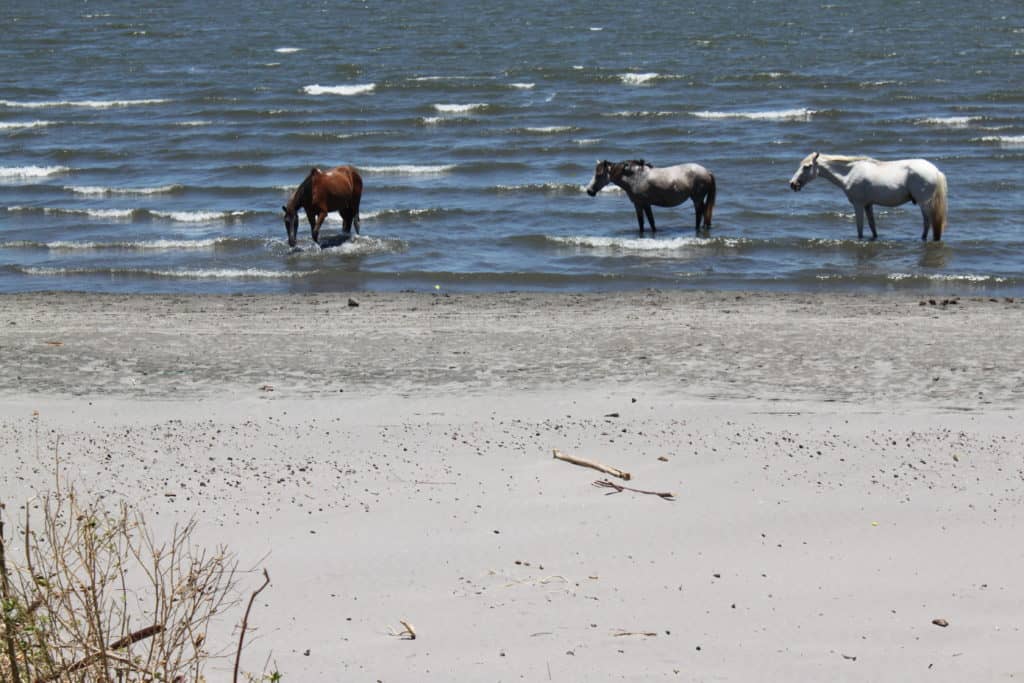
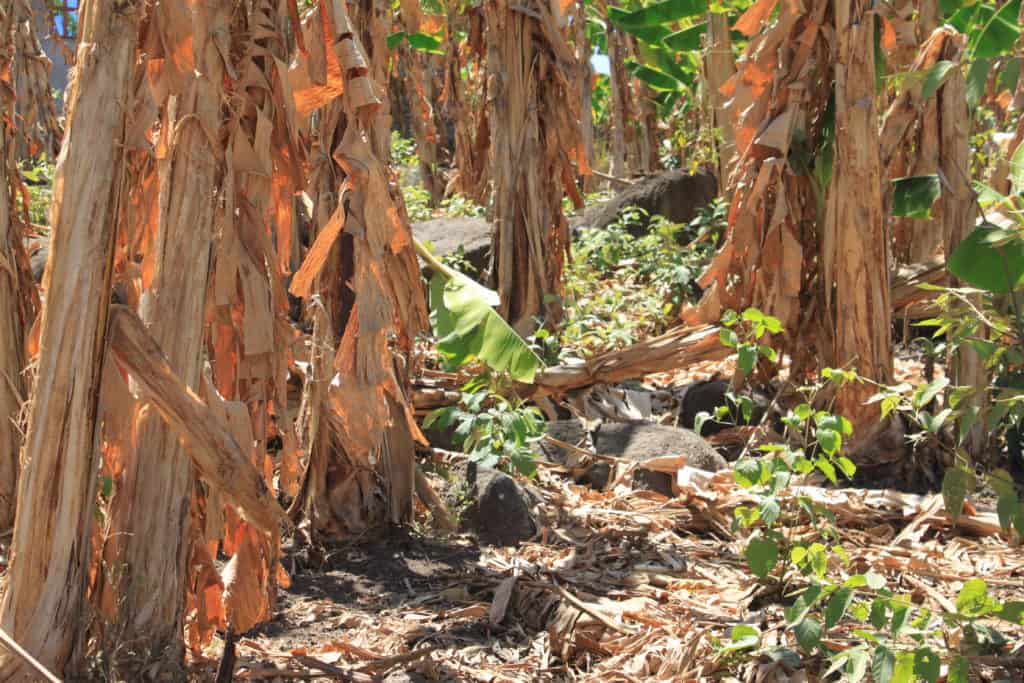
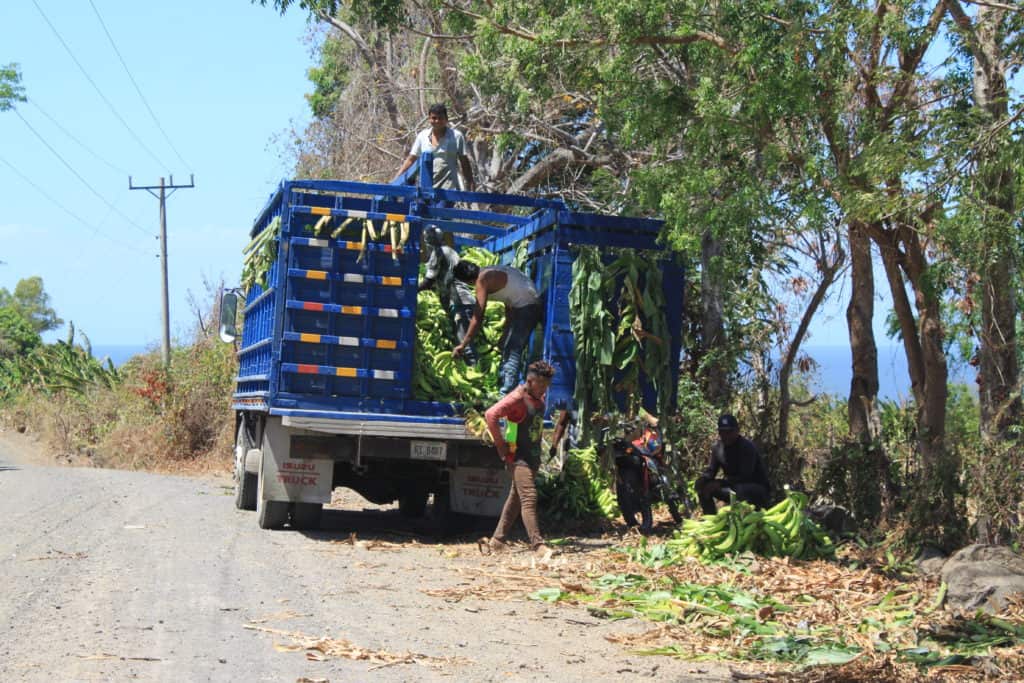


Our Route
